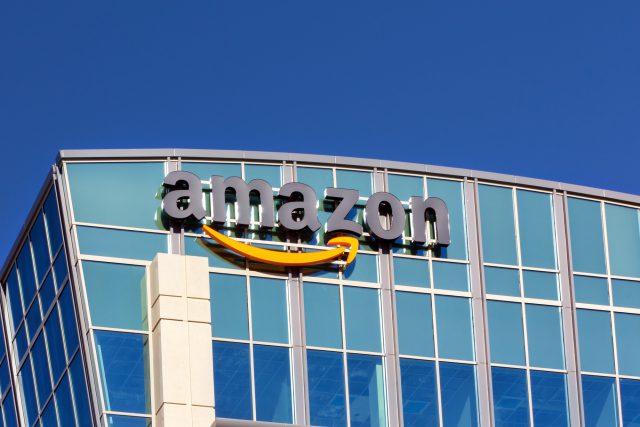I’m a strong believer that what goes around comes around. It’s such an important principle that dozens of other quotes have a similar meaning. Such as:
- “You reap what you sow.”
- “As you make your bed, so you must lie in it.”
- “Do unto others as you would have them do unto you.”
- “Every action has an equal and opposite reaction.”
- “What you give is what you get.”
- “Life is like a boomerang; what you send out comes back to you.”
- “Treat people the way you want to be treated.”
- “The energy you put out into the world will come back to you.”
- “What you do to others, you do to yourself.”
- “Good actions bring good outcomes, and bad actions bring bad outcomes.”
Taking this idea further, I also believe in loyalty. Except when it comes to pricing. Let me explain…
The Folly of Loyalty Pricing
The concept of loyalty pricing implies that customers should be rewarded for their loyalty. Loyalty schemes abound, so surely there must be some substance to this idea.
A loyalty scheme works for the vendor if the incremental margin from additional sales exceeds the foregone margin to customers who would otherwise have purchased.
“I believe in loyalty. Except when it comes to pricing”
Let’s take a simple example. A clothing store buys shirts for $40 and sells them for $100 each. The marginal cost of each sale (eg sales commission, transport, packaging, transaction costs etc) is an additional $20. So, the store is making $40 on each incremental shirt sold.
Assume that inventory is unconstrained/unlimited. That is, each sold shirt can be replaced with a new shirt from the manufacturer.
We have 2 groups of customers:
- Group 1 comprises the Regular customers who will buy 1 shirt per quarter, regardless of whether there is a loyalty discount or not. There are 1,000 regular customers in the store’s database.
- Group 2 comprises the Fickle customers. There are 6,000 such customers. 5% of them (300) will buy a shirt if there is a 20% loyalty discount. In the absence of a discount, none of them will buy a shirt.
We have 2 scenarios:
- Scenario 1 – No loyalty discount
- Scenario 2 – A 20% loyalty discount for any customer in the Loyalty program who buys a shirt during a 3 month period.
The table below shows the economics under the 2 scenarios.
| Scenario 1 ($) | Scenario 2 ($) | |
| Sell price per shirt | 100 | 80 |
| Margin per shirt | 60 | 40 |
| Shirts sold – Group 1 | 1,000 | 1,000 |
| Gross Revenue – Group 1 | 100,000 | 80,000 |
| Net margin – Group 1 | 60,000 | 40,000 |
| Shirts sold – Group 2 | 0 | 300 |
| Gross Revenue – Group 2 | 0 | 24,000 |
| Net Margin – Group 2 | 0 | 12,000 |
| Net Margin – Total | 60,000 | 52,000 |
Under scenario 2 the store has managed to sell 300 additional shirts due to the loyalty scheme. These additional sales have created incremental margin of $12,000. However, this incremental margin has been dwarfed by the $20,000 discount to Regular Customers who would have purchased whether there was a Loyalty discount or not.
In other words, the loyalty scheme has been a complete failure.
How could the loyalty program have been re-structured?
Typically, stores in this situation will try to tweak the size of the discount. For example, they might try reducing the discount from 20% to 10% in order to reduce the leakage to their Regular Customers.
Unfortunately, this approach doesn’t really work. Not only does this approach reduce leakage, it also reduces the attractiveness to Fickle customers. After some experimentation and optimisation, they quickly find that the % discount with the best financial outcome is zero. That is, they are better off not having a loyalty scheme of this kind at all.
To make the economics work, a better approach is to limit the benefit to the Regular Group. For example, the store might send an email to their entire database. To qualify for the discount, customers might need to:
- Register for the loyalty discount within 7 days of receiving the notification of the promotion, AND
- Make their purchase within 1 month of receiving their notification
This process would target the promotion towards the Fickle customers.
The program could be even more targeted if it was sent only to customers whose past behaviours lead them to being categorised as Fickle. However, this level of targeting would be considered unfair to Regular customers.
You may have noticed there is an irony in a well-designed “loyalty” program. You don’t want your most loyal customers (the “Regulars”) to use the program. You are actually hoping that the program attracts your least loyal customers. Because your least loyal customers display the highest elasticity of demand.
Many marketers take issue with this idea. But the mathematics and economics don’t lie. If the purpose of your loyalty program is to improve your bottom line, then you really want a dis-loyalty program. If the purpose of your program is to make you feel warm and fuzzy, that is a different story.
What about airline Frequent Flyer programs
I can anticipate your next question. What about airline frequent flyer programs? Surely, airlines wouldn’t run such loyalty programs if they were bad for business.
As it turns out, airline loyalty programs are very well designed. For example, IAG (owner of British airways) made a profit of £420m from its loyalty program in the 2023/24 financial year. The equivalent for QANTAS was $511m.
The airlines achieve this through various methods:
- Creating a new “currency” (ie frequent flyer points) with very high margins.
- Delivering low cost but highly valued lounge access to frequent flyers with high status.
- Earning commissions from distributing external products such as hotels and wine
- Offering exclusive access to distressed inventory for bargain hunters.
When it comes to lounge access, many consumers act irrationally. I have a friend who spent $1,000 flying Sydney-Perth return just to retain Gold status, when a club membership would have cost $600.
The key insight? These programs work precisely because they don’t reward actual loyalty – they exploit psychology and target price-sensitive customers with exclusive deals.
Discounts for new customers
No doubt you have seen many examples of organisations giving discounts to new customers, that are not available to existing customers. Examples would be:
- Banks providing honeymoon interest rates for 6 months
- Credit Card companies offering bonus Frequent Flyer points in return for being issued with a new credit card.
- Movie streaming services providing a free trial for 1 month
- Gyms providing a discount for the first 3 months
- Build to Rent operators offering free rent for the first month!
In all of these cases, the service provider is providing an incentive to get new customers into their system, and then hoping that inertia and/or a good experience will result in the customer continuing to use the service. These discounts work well for services with recurring income such as subscriptions and rentals.
You may have noticed that these discounts are the complete antithesis of loyalty programs. Whereas a loyalty program provides discounts to existing customers, the above examples charge existing customers more than new customers. The most rewarded customers are the most disloyal, who switch from one provider to another.
How do banks treat loyal customers?
Badly.
As noted above, banks provide honeymoon interest rates and other incentives to attract new customers. Have you ever seen honeymoon rates passed onto existing customers?
I have a friend who constantly moves his savings from one bank to another to take advantage of honeymoon rates. As soon as the honeymoon rate expires, he is off to another bank.
And another person I know does the same with credit cards.
The message is quite simple. Follow the money. When a business incentivises disloyalty, that’s exactly what they get. Disloyalty.
Loyalty in the Build to Rent context
Here’s the moment of truth for every BTR operator. You have three mutually exclusive choices:
Option 1: Treat all tenants equally (charge the same rent regardless of status)
Option 2: Reward loyalty (charge existing tenants less than new tenants)
Option 3: Maximize financial performance (charge what the economics dictate)
You can only choose one. And here’s what our data shows: Options 1 and 2 are costing you serious money.
The uncomfortable reality? New tenants and renewing tenants have completely different demand curves. Treating them the same is like using the same key for different locks – it simply doesn’t work.
The corollary is that the optimal rent to charge new tenants is different to the optimal rent for an existing tenant, for the same apartment.
This is completely logical, because they each have different factors at play:
- The new tenant has already decided to move, it is just a matter of where to. Wherever they move, they will need to pack boxes and pay removalist costs. In contrast…
- The existing tenant might be reasonably comfortable in their existing apartment. They might be happy to stay, subject to the asking rent. Staying where they are will avoid the costs and hassle of moving. However… there is a limit to what they can afford. But, how much can they afford?
By observing the behaviour of previous tenants, and taking into account increases in market rents, increases in asking rents, tenant tenure and relativity to rents for new tenants, we can calculate the rent increase for each tenant that will optimise financial outcomes. There are times when renewing tenants should be charged less than new tenants. There are times they should be charged more. And most importantly, they should rarely be charged the same as each other.
“The optimal rent to charge new tenants is different to the optimal rent for an existing tenant”
If you want the best financial outcome, then deciding to charge renewing tenants more or less than new tenants will depend on Economics. It will depend on Mathematics. It will depend on Data Analysis. But it will never depend on what feels warm and fuzzy.





